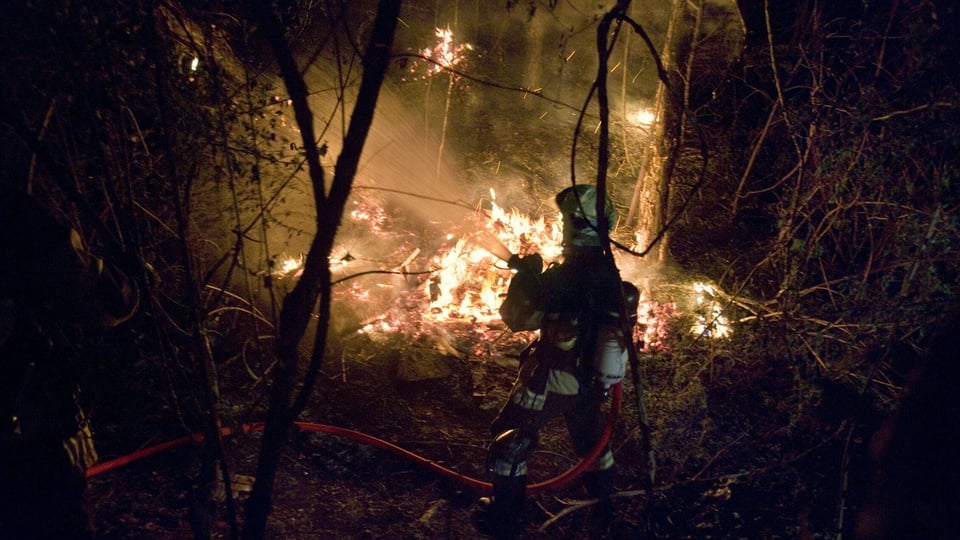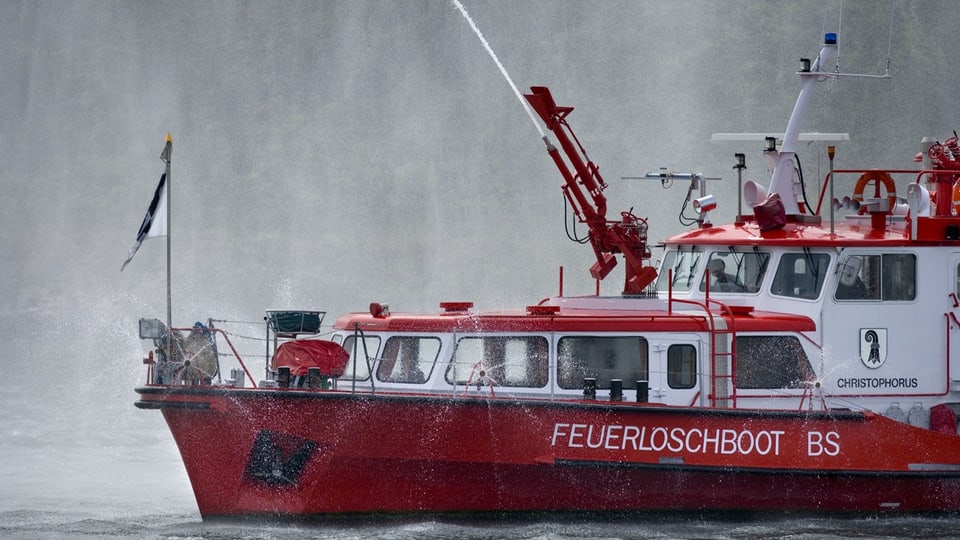Contents
The fire brigade is increasingly getting stuck in traffic, which is increasing and is being calmed down at a speed of 30 km/h. In Basel she would like to be able to activate the green light.
The siren sounds in the emergency room and firefighters immediately put on their uniforms and rush into the vehicles. But out on the street they get stuck in traffic jams – everyday life for the Basel professional fire department.
She should be at the scene within ten minutes, but that doesn’t work more and more often, especially in the Basel rural community of Riehen.
Legend:
If an alarm goes off, the Basel firefighters are in their clothes within 90 seconds and rush to the emergency vehicle, sometimes using a slide pole.
Keystone/Gaetan Bally (archive image)
“Of course that’s not satisfactory for us,” says Silvio Richner, a firefighter for 25 years. “There is already more traffic – the behavior of other road users often slows us down.” Basel has specifically purchased narrower new electric fire engines to make it easier to navigate tight curves.
Not only are queues of cars, trams and buses in the way, but also traffic calming measures such as speed limits of 30 km/h, staggered parking spaces or Cape stops. The fire brigade used to be faster, says deputy commander Gilbert Schneider, who has been there for 35 years.
We have to adapt to the traffic because the traffic does not adapt to us.
If there is a fire, they are likely to exceed the speed limit, but on 30 km/h sections, 60 km/h is practically impossible in traffic, says Roland Schielly, who has been extinguishing fires for 30 years. “We have to adapt to the traffic because the traffic doesn’t adapt to us.” The firefighters felt a lot of pressure when they were on the way to a fire where lives were at stake and then found themselves stuck in a traffic jam.
For the residents, 30 km/h speed is a blessing, but the fire brigade has a harder time getting out of the way because of slower vehicles. Schneider fears that with even more speed limits of 30 km/h and more bicycle lanes instead of car lanes, the fire department will be slowed down even more in the future.

Legend:
The Basel fire department also occasionally has to put out forest fires.
Keystone/Gaetan Bally
That’s why the Basel fire department is toying with a system that has already proven itself in Bern: a green wave from the base to the neighborhoods, i.e. activated traffic lights. Schneider would like this for Basel’s main axes, on which the fire brigade is deployed. Today she can only set the traffic lights to red right in front of her front door so that she can move out unhindered.
With this fire department prioritization in traffic, Bern is ahead of other cities. In the city of Zurich, firefighters can also switch traffic lights to green using a button when driving away from the station, but not for the entire rescue journey.
The system is currently being expanded in a trial. Zurich is testing an application that locates the vehicles and enables their route to the location. In an emergency, blue light organizations are allowed to run red lights and exceed the speed limit – as is common practice across the country – as long as they do not endanger anyone.
Aarau tests green button in emergency vehicles
In Aarau, a prioritization that is tied to the vehicles is currently being examined: Specifically, in the future, drivers of fire engines should be able to “switch the traffic light control of the stationary and mobile traffic lights to green when approaching, if this should be the case “It may be necessary for an urgent business trip,” as the city of Aarau said upon request.

Legend:
In addition to road vehicles, the Basel professional fire department also has a fireboat that can be used to fight large fires on the banks of the Rhine, for example in the harbor.
Keystone/Gaetan Bally
Daniel Ringier, head of the city’s security department, believes this prioritization is correct not only for Aarau, but for the entire canton of Aargau. And it should be possible for the Aarau city police in addition to the fire department.
The fire brigade is in a hurry not only on the way to the scene of the fire, but also on the way back to the base. The vehicle must be quickly made available there again for its next use. The Basel fire department is currently testing whether they can get through marked bus lanes more quickly and safely.

